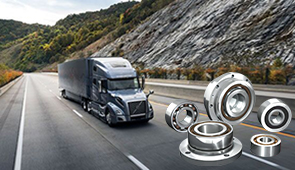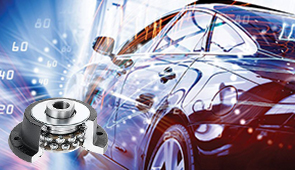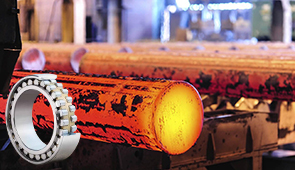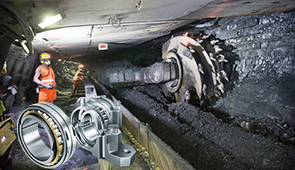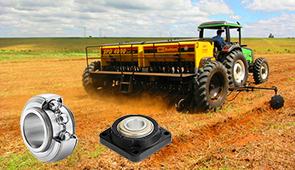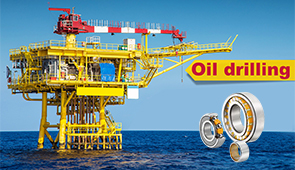Exploring Cam Roller Linear Guide Rail Systems: A Comprehensive Guide
Cam roller linear guide rail systems are a pivotal component in modern engineering and industrial machinery, offering precision, efficiency, and durability in linear motion applications. These systems are specifically designed to facilitate smooth, controlled motion along a straight path, making them indispensable in a wide range of industries, such as manufacturing, automation, packaging, and robotics. By leveraging unique design attributes, such as robust cam rollers and rigid rail structures, these systems ensure high load capacity, reduced friction, and exceptional reliability even in demanding environments. This guide aims to provide a thorough exploration of cam roller linear guide rail systems, covering their fundamental principles, critical components, operational mechanics, and various applications.
What Are Cam Roller Guides?
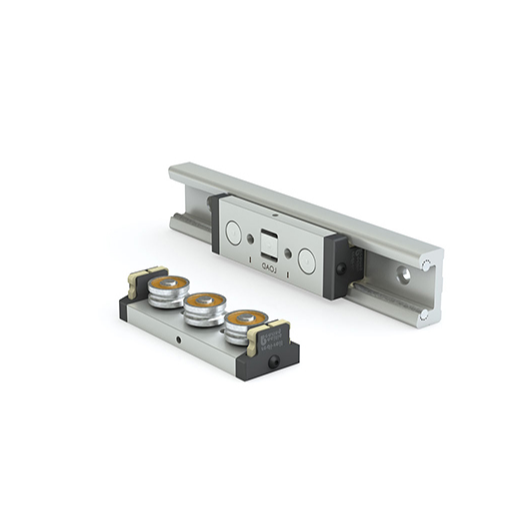
The Role of Roller Bearings in Linear Motion
Facilitating unidirectional movement is a crucial functionality of roller bearings. They enable movement along a guided path with minimal friction and high precision. These components are optimally designed to manage axial and radial loads, making them essential in some applications as they enable high speeds and long life. The integration of cylindrical and needle rollers as rolling elements results in a larger contact area when compared to ball bearings, thereby enhancing load capacity and reducing surface stress.
- Load Capacity: Roller bearings are designed with a greater level of contact area, which enables themto withstand higher dynamic and static loads. For example, depending on its size and material, a standard roller bearing would typically have a dynamic load rating of around three hundred kN.
- Friction Coefficient: These have a rolling contact mechanism enabling smoother and more energy efficient motion resulting in lower friction coefficients, usually between 0.001 and 0.005.
- Accuracy Classes: Roller bearings adhere to precise standards roughly of ISO or ABEC grades and achieve precision in positioning of ±1 micron to ±10 microns.
- Operating Speed: Concerning the performance of the lubricant used, roller bearings can allow linear speeds of as much as 10 meters per second, especially within high-performance applications.
- Material Composition: These steels, along with their corrosion-resistant alloys, are some examples of AISI 52100 chromium steel bearing materials. They maintain their integrity under even the harshest conditions.
Through maintaining a careful equilibrium among these factors, roller bearings make sure linear motion systems work dependably in intricate industrial fields such as robotics, automation, and construction equipment operation.
Why Choose Cam Roller Systems for Industrial Applications?
I prefer cam roller systems for industrial applications because of their accuracy, dependability, and ability to sustain loads, which are crucial for harsh working conditions. These cam rollers can withstand the test of time even in the most difficult operational environments where they are subjected to extreme temperatures, vibrations, and towering loads.
- High Load Capacity: Cam rollers work efficiently to proffer radial and axial loading, which maintains stability on heavy machines.
- Material Durability: Constructed from high strength materials like AISI 52100 chromium steel, these systems are virtually free from wear and corrosion, eliminating the need for frequent and costly maintenance.
- Low Friction Coefficient: By dramatically reducing the friction brought about by the moving parts, rolling elements added to the efficiency of the system, especially in automation and robotics where precision is critical.
- Temperature Resistance: Many roller systems are endowed with this quality allowing the systems to function effectively in temperatures ranging from -30 degrees to 120 degrees, making them useful for many industries.
- Ease of Installation: Their compact structure enables easy fitting which reduces the time required to upgrade or repair the system.
Due to these attributes, cam roller systems are necessary in robotic, automation, and heavy machinery manufacturing industries where accuracy and functionality over a long duration are a requirement.
How Do Cam Roller Linear Guides Work?

The Importance of Guide Rails in Motion Systems
As motion system technologies evolve, guide rails need to provide high linear movement support across industries. To put it simply, the primary function is to serve as the foundation for reducing friction when dynamic loads are being carried out during linear motion. The alignment and rigidity of guide rails are crucial for guaranteeingthe accuracy and repeatability of systems like CNC machinery robotics and packaging equipment.
- Load Capacity: depends on the application requirements, guide rails are able to withstand static and dynamic loads which are rated in kN.
- Precision: For high accuracy demands, the straightness and flatness tolerances of guide rails can go as low as ±5 micrometers.
- Material Composition: They are usually made out of hardened steel or alloy, hardened steel and alloy provides durability and wear resistance which is essential for long term operation.
- Surface Finish: The use of polished or coated surfaces reduces wear and friction, ensuring smoother operation and longer life.
When combined, these technical requirements not only guarantee operational efficiency, but also the life expectancy under strenuous industrial conditions.
Exploring Linear Motion and Carriage Mechanics
Carriage system design and linear motion are both fundamental parts of engineering mechanics that make rotation around a vertical axis or declination to the surface effortless.
- Load Capacity: The carriage system can carry and move around certain defined weights based on the design and mechanical strength of the system. Load capacity selection is critical to avoid system overload and or damage during operational conditions.
- Precision and Accuracy: A considerable precision and linear motion systems require some preset tolerances and some preset backlash depends the accuracy in straight line motion which in fact depends on at the lignment of the rail, the quality of the bearings, etc.
- Material Composition: Hardened stainless steel and alloys systematically used as tougher materials decrease deformation under stress in addition to using these materials increased longevity of the system.
- Lubrication Specifications: Wear and tear and rubbing together are avoided through fitting lubrication to allow for movement to be effortless. The operating environment extremes or risk of pollution adds to the difficulty.
- Dynamic and Static Friction Coefficients: The movement becomes effortless under load, the initial motion requires usage of some effort for these two parameters directly affect the energy efficiency of the system.
The application requirements and environmental factors justify every one of these factors so that the system can achieve the linear motion system accuracy and reliability.
Components of a Cam Roller Linear System
In comparison to other materials, hardened steel is far superior for cam roller guides because of its unrivaled mechanical properties and durability. For instance, its high resistance to erosion ensures extended operational life even during high-load or high-cycle applications. This high operational life lowers the need for maintenance activities along with downtime. Furthermore, It’s density to density-to-density-to-strength ratio allows hardened steel to sustain heavy loads with little structural deformation at the same time.
- Hardness Ratings (Rockwell Hardness Scale): Hardened steel has a rating of typically between 58 and 65, which makes it ideal as it would experience minimal erosion under standard use.
- Load Capacity (Static and Dynamic): Hardened steel performs better under dynamic and static loads because of its enhanced material strength under pressure.
- Corrosion Resistance: With nitriding and chrome plating heat treatments, hardened steel can be used in moderately corrosive environments.
- Dimensional Stability: Hardened steel maintains its accuracy concerning dimensions during a range of different temperatures, which enables it to maintain motion precision.
Because of these benefits, hardened steel is ideal for use in cam roller guides in place where high efficiency and reliability are needed. Ensuring that these aspects are taken into account, guarantees that the system will work under strict performance criteria for a long time.
What Are the Benefits of Using Linear Rail Systems?

The Advantages of Using Hardened Steel in Cam Roller Guides
In light of the materials to be utilized for cam roller guides, hardened steel is the best option when considering materials to performance attributes and qualities. The foremost advantages of my work shall be noted as remarkable resistance to wear and astonishing durability due to its high hardness (typically 58 to 62 HRC). This hardness allows for the material to be put through rolling contact while undergoing deformation and degradation due to heavy loads over time.
In addition, hardened steel possesses excellent stability at different operating temperatures of hardened steel and the thermal expansion coefficient of hardened steel is lower in comparison to other materials, assuring virtually no distortion during environmental changes for greater motion systems precision reliability.
In addition, the material possesses impressive load bearing abilities with static load ratings frequently surpassing 1000 kg per cam roller for different designs of the guide system. Hardened steel is robust and reliable over extended periods of time, which along with compatibility with lubricants and coatings developed for friction reduction in demanding settings makes it a preferred option for these settings. This is what provides precision, robustness, and long-term tensile strength.
How Precision and Capacity Impact Performance
Both precision and capacity influence the effectiveness of a mechanical system profoundly, especially when discussing precise measurements combined with a high load. Precision guarantees accurate alignment and minimized tolerances, which reduces wear, vibrations, and energy usage to the minimal. For instance, guide systems with a precision tolerance of ±0.01 mm can improve both component efficiency and lifespan by minimizing misalignment. In contrast, capacity describes the system’s capability to sustain static and dynamic loads. Cam rollers with static load ratings greater than 1000 kg are optimally negative1n8553ned, enabling structural durability under excessive loads.
- Precision Tolerance: ±0.01 mm – Aligns with the standard system performance without alignment errors.
- Static Load Rating: ≥1000 kg per cam roller – Aids in performance for high-load situations.
- Material Properties: Hardened steel Rockwell hardness (HRC) of 58-62 – Provides effective durability against wear.
- Friction Coefficient: Decreased by proper lubricants and/or coatings, generally ≤0.1 – Minimizes energy loss and wear in high-friction situations.
When these factors are tracked and controlled, the system’s functionality is increased, especially in high-precision and demanding operational setting.
Comparing Aluminum vs Steel Options
The decision to go with aluminum or steel comes down to the specific application needs, such as the required strength, weight, corrosion resistance, and cost of the material.
- Strength-to-weight ratio: As compared to steel, aluminum has better strength-to-weight ratio, making it very useful for weight-restricted industries like aerospace and automotive. For instance, and aluminum’s density is roughly 2.7 g/cm³ while steel density is 7.85 g/cm³. The comparison suggests a significant weight saving potential.
- Corrosion Resistance: Aluminum resists corrosion due to the formation of constant passive oxide layer protective surface, and does not need pre-treatment of the surface for corrosion protection. Steel on the other hand, if untreated, put through corrosive or moist environments is guaranteed to rust unless it is protected by coatings or is stainless.
- Hardness and Durability: Steel generally outmatches aluminum in hardness and wear resistance, especially with hardened grades (Rockwell Hardness of 58 – 62 HRC). As a consequence of this, the majority of predeforming types of materials designed for high mechanical stressing are much more deformable for loads oriented in other directions.
- Machinability and Fabrication: Steel has better combination of mechanical strength and durability under high temperature weld application. However, aluminum is easier to machine and form from steel because of its lower density and ductility.
- Cost and Availability Statement: Initially, aluminum may seem pricier than regular steel alternatives; however, its lightweight nature and corrosion resistance save aluminum users maintenance costs in the long run. Steel, on the other hand, is more economical for applications that need extreme robustness due to its low initial cost.
Taking these factors into consideration and matching them with operational needs makes the selection between aluminum and steel justifiable.
How to Install Cam Roller Linear Guides?
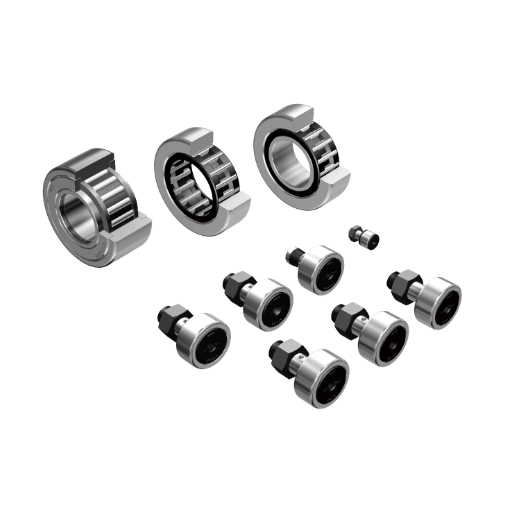
Common Mistakes to Avoid During Mounting
- Improper Alignment of the Guides: Not achieving parallelism between the guide rail and the mounting surface can lead to frequent and uneven distributions of load which can heighten wear and tear. Employ precision tools like dial indicators and laser alignment devices which help in measuring the accuracy of alignment. In the length of the rail, tolerances should ideally be within ±0.05 mm.
- Insufficient Surface Preparation: Uneven surfaces or surfaces with contamination can make it challenging to maintain stability while operating the equipment. A flatness of around 0.01 mm must be achieved through proper cleaning and machining of the mounting surface to maximize contact with the equipment and minimize vibration.
- Incorrect Torque Application on Fasteners: If too much torque is applied, it can lead to movement and misalignment of the rail. This is due the rail being deformed because of over-tightening. Applying too little torque can also lead to movement or misalignment. Always adhere to the manufacturer’s torque specifications which usually vary between 5 Nm to 25 Nm depending on the size and material of the guide.
- Skipping Preload Adjustments: Failing to adjust the preload settings has the potential to lead to having too much friction or not enough rigidity. Preload settings should achieve the goal set for the application and usually range from 0.01mm to 0.02mm for high-precision usage.
- Failure to Apply Lubrication: Not using appropriate lubrication considerably increases the resistance of the guides used Federing the lifespan of the guides. For high load environments, one can use high viscosity oils while for extreme temperatures, synthetic greases can be effective.
Correcting these possible mistakes and following the suggested technical standards improves the installation procedure’s accuracy, reliability, and overall performance while also making it easier for the user in the long run.
Tips for Ensuring Proper Preload and Alignment
To maintain optimal preload and alignment, I suggest following these steps:
- Precise Application of Torque: Apply the required preload with a calibrated torque wrench. For medium-sized linear guides or bearings, the manufacturer usually specifies torque to be around 20 Nm ± 1 Nm.
- Verification of Subsequent Motion Displacement: Check if components can move axially after applying preload. In terms of loosening tolerances for high-precision setups, oscillating ranges are typically ±0.005 mm to prevent overload and more fully distribute force interfaces.
- Reads on Cross-Sections: Carry out checks on the angle of alignment using dial indicators, laser alignment systems, straight edges, etc. The guide rails must not be parallel for more than 0.01 mm over 1m to prevent distortion due to misplaced loads, so it becomes a normal rule.
- Offset Heat Expansion: Pay attention to the design of thermal expansion coefficients of materials. For example, steel parts grow at a rate of 11-13 µm/m°C, so temperature effects should be handled particularly where fluctuation areas are strong.
- Step-Wise Tightening Sequence: Use cross or star patterns to tighten bolts or other fasteners. This reduces potential offset misalignment at the interface joint and thus ensures complimentary preload application.
Complying with the aforementioned directives and utilizing suitable tools and devices for measurement will guarantee suitable balance of preload and system alignment, which will help to optimize both efficiency and longevity.
Where to Purchase Cam Roller Guides Online?

Top Stores for Cam Roller Components
- Load Capacity: It’s the highest radial and axial loads the cam roller can withstand without distortion. Static and dynamic load capacities should be verified according to application requirements.
- Tolerances: Check that the rollers do not exceed ISO standards so that they can be aligned properly.
- Material and Surface Treatment: Certain environments require corrosion-resistant materials such as stainless steel or PTFE coatings.
- Operating Temperature Range: In conditions of severe working limits, proper materials and lubricants must be selected to relieve thermal stresses.
- Mounting Compatibility: Check for different mounting configurations (i.e. stud or yoke types) and for the interoperability with other equipment.
Confirmation of these factors ensures that the chosen products function within system requirements and with dependability.
How to Browse Product Descriptions for Best Deals
While looking for the best prices in product descriptions, I pay attention to particular technical specifications that relate to the application. First, I ensure to check the provided load capacities, which include radial and axial loads, as they affect the lifetime and operation of the parts under certain loads. Next, I check the material specifications, especially for parts that are to work in corrosive or humid area,s and ensure that the fabrication material
meets the environment’s specification.
Apart from that, I also check the outer diameter, inner diameter, and thickness as they are dense dimensional since those will be used in the mechanical assembly. I check the listed tolerances, which are often, but not limited to, ±0.01 mm, because such values guarantee accurate machining and fit. Furthermore, I look at other parameters, for example, type of lubrication, temperature range of operation, and other factors that allow non-standard solutions to be implemented to meet special system needs.
Considering the accuracy of these factors combined with the dependability of the provider, I can meet the particular use case requirements specifications in the most affordable and efficient solution.
Frequently Asked Questions (FAQs)
Q: What are cam roller linear guide rail systems?
A: Cam roller linear guide rail systems are mechanical components that facilitate linear motion by using cam roller technology products. They consist of rail guides and cam roller carriages that work together to provide smooth and precise linear movement.
Q: How do slider assemblies function in these systems?
A: Slider assemblies function by housing the cam rollers that move along the rail guides. They are designed to be durable and often come sealed and lubricated to reduce maintenance. The assemblies may include adjustable features to suit various applications and can be used with interchangeable components.
Q: What are the benefits of using cam roller technology products?
A: Cam roller technology products offer several benefits, including high load capacity, durability, and smooth operation. They are best suited for applications requiring precise linear motion and can handle heavy-duty cycles due to their robust design.
Q: What is a roller rail, and how does it relate to cam roller guides?
A: A roller rail is a component of the cam roller guide system that provides the track or pathway for the cam rollers. It is often made of hardened steel raceways for durability and is integral to the overall performance of the linear guide system.
Q: How do I choose the right cam roller carriage for my application?
A: Choosing the right cam roller carriage depends on factors like load capacity, environmental conditions, and duty cycles. It’s important to consider whether the carriage needs to be sealed and lubricated and if it should include features like an eccentric adjustment or wiper options.
Q: Can I purchase linear cam roller guides from an online store?
A: Yes, linear cam roller guides can be purchased from various online stores. These platforms often provide detailed descriptions, CAD models, and additional information to help you select the right products for your needs.
Q: What materials are used in the construction of cam roller linear guide systems?
A: Cam roller linear guide systems typically use materials like aluminum rail and hardened steel raceways. These materials contribute to the system’s durability and performance under different conditions.
UCTH213-40J-300 with Setscrew(inch)
CNSORDERNO: Normal-duty(2)
TOGN: UCTH213-40J-300
SDI: B-R1/8
SD: 2 1/2
UCTH212-39J-300 with Setscrew(inch)
CNSORDERNO: Normal-duty(2)
TOGN: UCTH212-39J-300
SDI: B-R1/8
SD: 2 7/16
UCTH212-38J-300 with Setscrew(inch)
CNSORDERNO: Normal-duty(2)
TOGN: UCTH212-38J-300
SDI: B-R1/8
SD: 2 3/8
UCTH212-36J-300 with Setscrew(inch)
CNSORDERNO: Normal-duty(2)
TOGN: UCTH212-36J-300
SDI: B-R1/8
SD: 2 1/4
UCTH211-35J-300 with Setscrew(inch)
CNSORDERNO: Normal-duty(2)
TOGN: UCTH211-35J-300
SDI: B-R1/8
SD: 2 3/16
UCTH211-34J-300 with Setscrew(inch)
CNSORDERNO: Normal-duty(2)
TOGN: UCTH211-34J-300
SDI: B-R1/8
SD: 2 1/8










